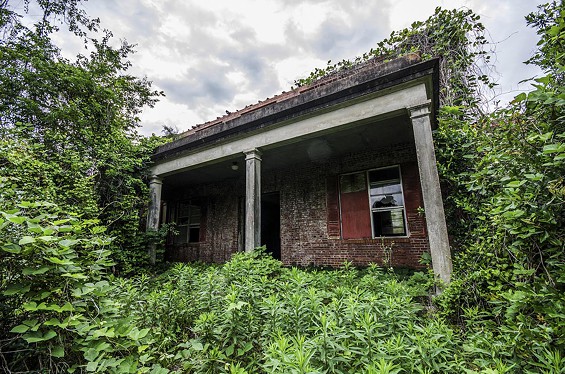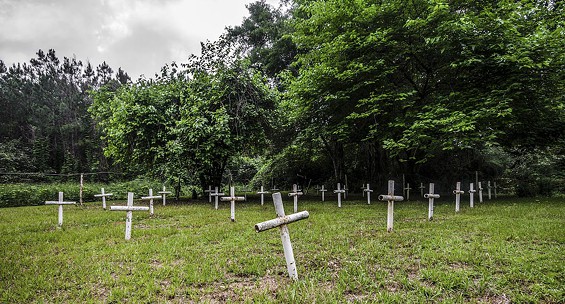The Dozier School for Boys had cemeteries instead of playgrounds.
Written by: Greg Emmerich, Promega Corporation
The stories of abuse that took place at the reformative school in Marianna, Florida are nothing short of a plot for the TV series American Horror Story. The beatings and other punishments administered to students throughout the school’s 111-year history contributed to the deaths for some of the nearly 100 deceased.
Photo from Miami New Times
A 2010 investigation by the Florida Department of Law Enforcement did not lead to criminal charges against the school because there was “no tangible physical evidence for allegations of physical and sexual abuse.” The full report is available on The White House Boys Survivors Organization’s website, a name derived from the shed where the boys were beaten with wooden panels and leather straps. At the time, only 32 unmarked graves were known in the school’s cemetery.
Register for #ISHI27 to hear how victims of the Dozier School for Boys were identified by #DNA. Share on X
The next year, the U.S. Department of Justice Civil Rights Division found “systematic, egregious and dangerous practices exacerbated by a lack of accountability and controls” in their 2011 report that placed students “at serious risk of avoidable harm in violation of their rights protected by the Constitution of the United States.” The Dozier school was forced to close that same year, and the state of Florida was forced to take immediate measures to strengthen its oversight process and determine the extent to which the oversight failures may be leading to harm for other juveniles. Our grave count still remains at 32.
Photo from Miami New Times
Forensic anthropologist Erin Kimmerle was not satisfied with these results. Why were the graves unmarked? Why would this public institution not have a record of where anyone was buried, contrary to the example set by state hospitals and prisons? Kimmerle led a team from the University of South Florida to investigate the burial site. Using ground penetrating radar, her team was able to discover a total of 55 graves, or almost twice as many as the Dozier school claimed. This was enough evidence for Governor Rick Scott and the Florida Cabinet to issue an excavation permit for Kimmerle’s team.
For more on the Dozier School for Boys, you may like these articles:
- Florida’s Dozier School For Boys: A True Horror Story
More bodies found than expected at the Dozier School for Boys
- Archaeologists Finally Know What Happened at This Brutal Reform School
- Historic Photographs: The Dozier School for Boys
The final results of the excavation found 51 sets of human remains of which 17 have already been matched to families based on DNA evidence. Autosomal STR and mitochondrial DNA testing were performed on the skeletal remains by the University of North Texas Health Science Center (UNTHSC). The remaining pool of missing persons was up to seven positive identifications (DNA, unique dental morphology, etc.) and 14 presumptive identifications (age, sex, ancestry, etc.) at the time of the report. Kimmerle hopes to be able to identify all the remains, and her team has gone through painstaking effort to piece bone fragments together and run isotope analyses from tooth enamel.
As for a criminal case against Dozier and the state of Florida? Kimmerle does not propose any allegations in her report. The reason the State of Florida did not prosecute the school or the educational board was a lack of physical evidence, but a nose for good science has turned up exactly that. The case seems likely to be reopened, which would give the White House Boys some justice after all these years.
The Dozier case will be presented by Kendra Felipe-Ortega, a lead analyst at UNTHSC performing the DNA identification, during the International Symposium on Human Identification this year.
Greg Emmerich is a science writer at Promega striving to combine creativity with science. He lives off adrenaline rushes from skiing and discovering new music. He received his B.S. Microbiology and M.S. Biotechnology degrees from UW Madison.
WOULD YOU LIKE TO SEE MORE ARTICLES LIKE THIS? SUBSCRIBE TO THE ISHI BLOG BELOW!




